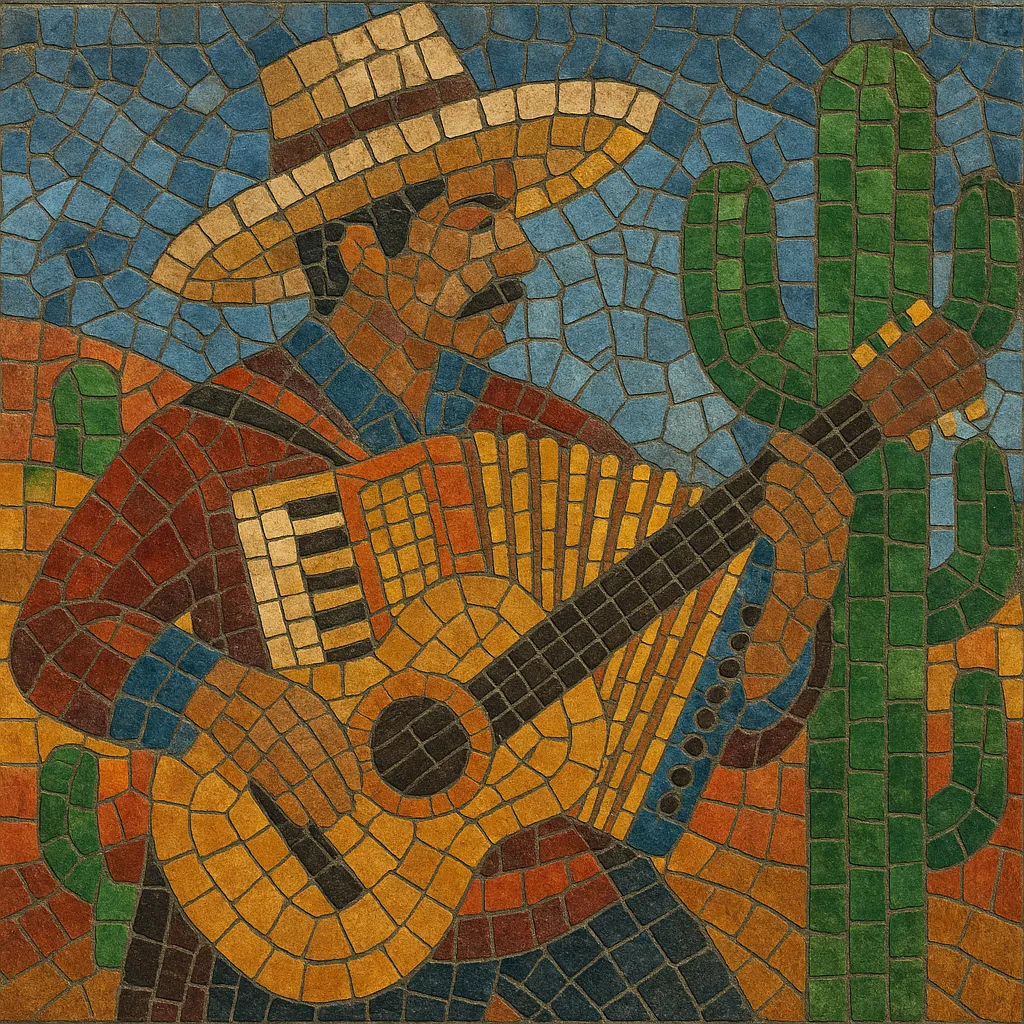Tex-Mex is a borderland fusion that blends Mexican conjunto and norteño traditions with U.S. country, rock and roll, and blues. Its signature sound revolves around the diatonic button accordion leading catchy melodies over the strummed/bass-walking bajo sexto, with electric bass and drums locking in an "oom‑pah" polka or a lilting waltz.
The genre emerged in Texas border communities, absorbing German and Czech dance rhythms (polka, schottische, waltz) while adopting American honky‑tonk, rock backbeats, and blues guitar licks. Songs often mix Spanish and English (Spanglish), highlighting stories of love, migration, work, and pride in Tejano/Mexican American identity. Compared with glossy 1980s+ Tejano pop, Tex‑Mex typically stays more rootsy and accordion‑driven, though many artists move fluidly between the two.
Tex-Mex grows out of Texas–Mexico border music, especially conjunto and norteño, which themselves absorbed German and Czech polkas and waltzes brought by immigrants. Early conjunto innovators (e.g., Valerio Longoria) shaped the accordion–bajo sexto pairing and introduced drum sets, paving a pathway for a louder, dance‑band sound.
By the 1960s, Mexican American bands began fusing conjunto with rock, country, and R&B. Doug Sahm and the Sir Douglas Quintet popularized a distinctly "Tex‑Mex" rock sound, while Flaco Jiménez brought virtuoso accordion to country, blues, and rock audiences. Freddy Fender’s bilingual hits in the 1970s carried Tex‑Mex to mainstream pop and country charts.
The modern image of Tex‑Mex crystallized with supergroups like the Texas Tornados (Flaco Jiménez, Doug Sahm, Augie Meyers, Freddy Fender), who combined roadhouse rock, honky‑tonk, and conjunto polkas/waltzes with effortless bilingual vocals. Parallel to Tex‑Mex, Tejano pop incorporated synthesizers and slick production, yet artists frequently crossed between both styles on records and stages.
Tex‑Mex remains a staple of border dancehalls and roots‑music festivals. Its accordion‑anchored, dance‑forward energy continues to inform Americana, alt‑country, and Latin rock, while younger acts draw on its bilingual storytelling and hybrid rhythmic vocabulary.


